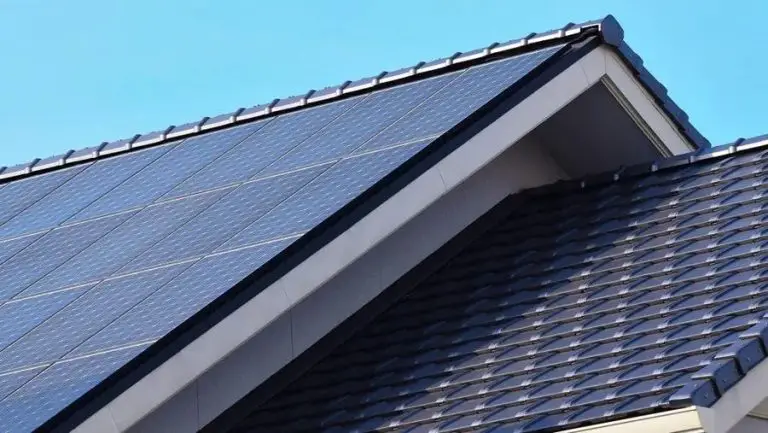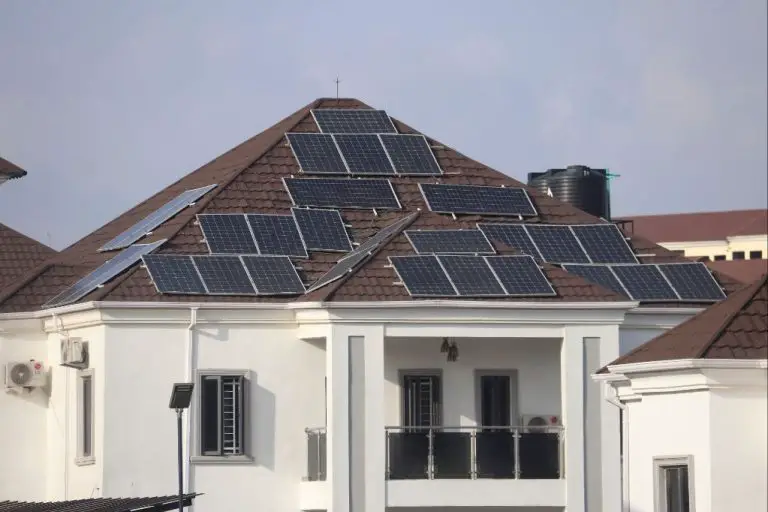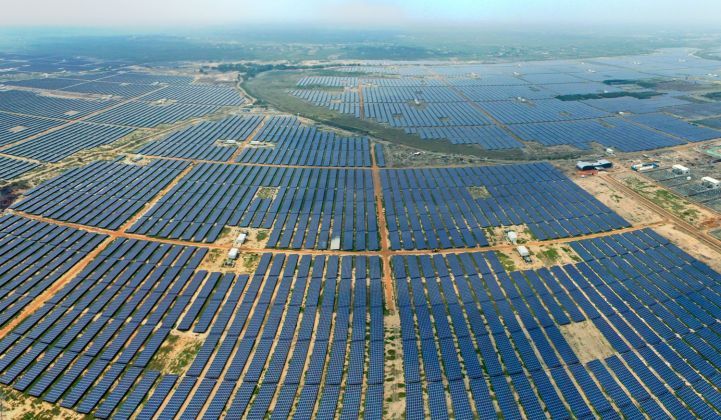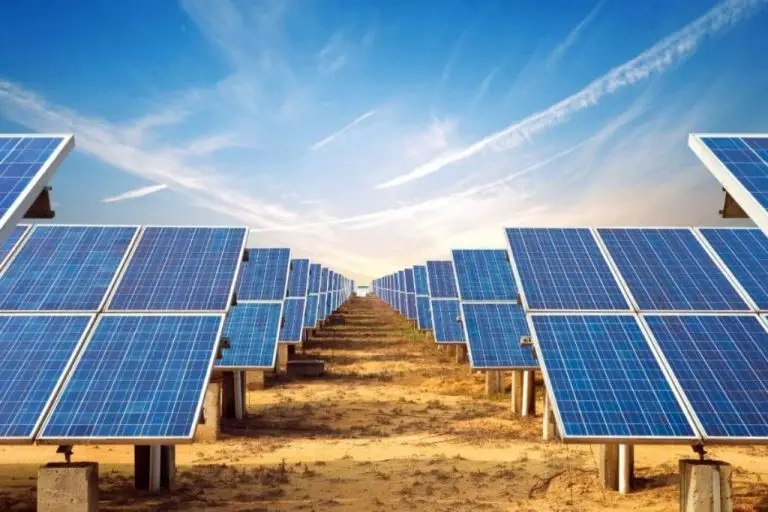What Are The Two Most Popular Types Of Green Energy?
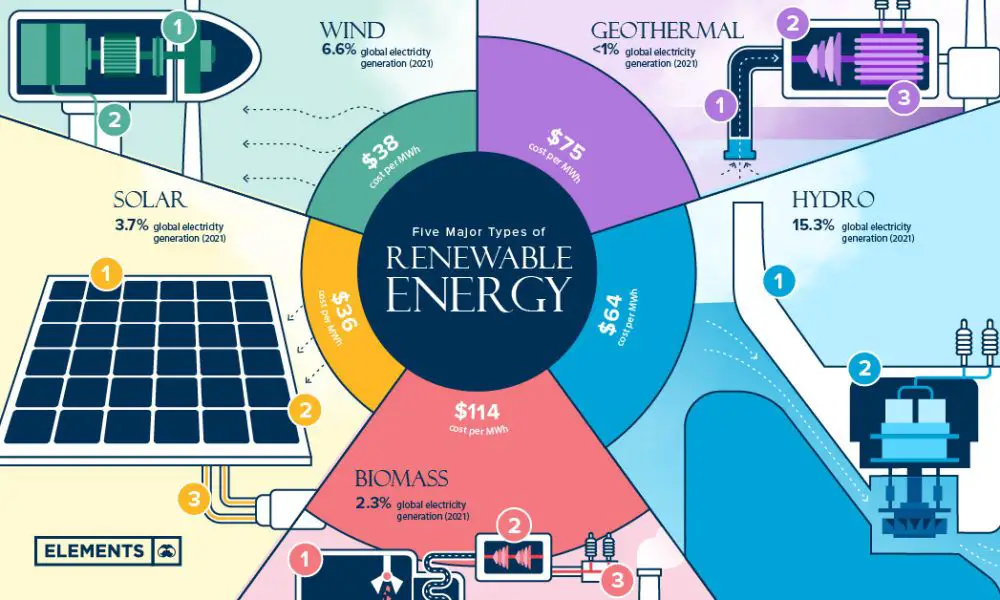
Renewable energy sources like solar and wind power are becoming increasingly important as the world looks to transition away from fossil fuels. Green energy provides a clean alternative to coal, oil, and natural gas, which produce large amounts of greenhouse gas emissions that contribute to climate change. Renewable sources also help reduce air pollution and improve public health.
The two most popular and quickly growing types of renewable energy are solar and wind power. Both solar photovoltaic panels and wind turbines have become more efficient and cost-effective in recent years. As technology continues to advance and prices drop, solar and wind are projected to make up an increasing proportion of electricity generation globally. Understanding the key characteristics, benefits, and challenges of these two major sources can provide insight into the future of green energy.
Solar Power
Solar power is energy harnessed from the sun using photovoltaic (PV) cells, which are made of a semi-conducting material, usually silicon. When sunlight hits the PV cells, it produces an electric current. Multiple PV cells can be arranged into flat panels that can be installed on rooftops and other sunny locations. The electric current produced can power homes, businesses, and more.
According to the Solar Energy Industries Association (SEIA), over the past decade, solar has grown at an average rate of 24% annually, representing the fastest growing electricity source in the U.S. https://www.seia.org/solar-industry-research-data. In 2021, solar accounted for 3.3% of total U.S. electrical generation. This is projected to reach 20% by 2030 as solar costs continue to fall and adoption increases.
The main benefits of solar power include:
- Renewable – Solar energy does not require fuel and won’t run out.
- Clean – Solar PV systems produce electricity with zero emissions.
- Reduces fossil fuel dependence – Using solar offsets coal, natural gas, and other non-renewable sources.
- Cost reductions – The average cost of solar energy system installations has dropped over 70% in the last decade.
Wind Power
Wind turbines capture kinetic energy from the wind and convert it into electricity. The wind turns the blades of the turbine, which spin a shaft connected to a generator that produces electricity.
Wind power has seen tremendous growth globally in recent years. According to the International Energy Agency (1), wind electricity generation increased 14% in 2022 to over 2,100 terawatt hours. This growth has been driven by larger turbines, technological advances, and favorable policies.
The United States is one of the leading countries for wind power adoption. Wind generates over 9% of U.S. electricity, enough to power over 40 million homes (2). Texas produces the most wind power of any state.
Some key benefits of wind power include its low operating costs once installed, zero emissions, and local job creation. Wind power is also drought resilient and uses very little land, making it an efficient renewable energy source.
Comparing Solar and Wind
There are some key differences between solar and wind power that are important to consider when comparing these two popular renewable energy sources (Wind for Future, 2023). Solar power harnesses energy from the sun using photovoltaic panels, whereas wind power utilizes the wind’s kinetic energy with turbines (IRENA, 2020).
Some of the main pros of solar power include no fuel costs after installation, ability to install on small and large scales, and modularity for custom systems. However, solar only generates energy during daylight hours and depends on sunny weather. The pros of wind power are no fuel costs, ability to install in windy locations on- and offshore, and generation at all hours. The cons are intermittency based on wind conditions and less modularity than solar (Wind for Future, 2023).
When it comes to costs, wind power tends to be more cost effective for large-scale utility projects, while solar can be more affordable for residential installations (IRENA, 2020). Overall, both technologies are now cost competitive with fossil fuels. The ideal renewable energy solution often utilizes both solar and wind power to maximize generation based on the local conditions and resources.
Challenges
While solar and wind energy hold enormous potential as renewable sources, there are challenges to their wider adoption. One major obstacle is intermittency – solar and wind are variable sources, dependent on weather conditions. During cloudy or low-wind periods, generation can drop significantly (Source).
Intermittency can lead to grid instability if load and generation are not balanced. Energy storage solutions like batteries can help mitigate this, by storing excess renewable energy during peak output and discharging when generation drops. However storage technology remains expensive. Research to improve storage duration and lower costs is crucial (Source).
The variability of solar and wind also makes management and forecasting more complex compared to traditional baseload power. Grid operators have to evolve forecasting capabilities and operations to handle the fluctuations (Source).
Government Policy
Governments play a major role in promoting renewable energy through policies such as tax credits, incentives, and mandatory renewable energy targets. According to a 2023 article by Energy5, government renewable energy policies help “create a thriving market for renewable technologies, driving job creation and providing clean energy solutions.”
One of the most impactful policies is tax credits and incentives. As explained in a 2006 study published in Natural Resources Journal, “State renewable energy tax incentives, grants and rebates have proven to be highly successful motivators in the development of renewable energy facilities.” The federal government also offers investment tax credits to support solar and wind development.
Governments also establish renewable portfolio standards which require electricity providers to supply a minimum percentage of power from renewable sources. According to a 2012 study in Energy Policy, these standards have driven significant growth in U.S. renewable energy generation. Many states also set their own renewable portfolio standards with targets of up to 100% renewable energy by 2050.
While policies differ across states and change over time, government initiatives to promote renewables have proven essential for driving market growth of solar, wind and other green technologies.
Future Outlook for Solar and Wind Power
The future is bright for solar and wind power as the world shifts to more sustainable and renewable sources of energy. Projections show massive growth in the coming decades for both solar and wind.
According to a report by the International Renewable Energy Agency (IRENA), solar power capacity could grow over 200% by 2030, reaching over 4500 gigawatts worldwide. Onshore and offshore wind power are projected to see over 75% growth by 2024, reaching around 930 gigawatts of global capacity.Source
There is strong potential for solar and wind to meet a substantial portion of the world’s electricity needs in the future. IRENA estimates that renewable energy could supply up to two-thirds of global power demand by 2050, with solar and wind providing over half of that supply. With costs continuing to fall and technology advancing, solar and wind are poised to proliferate and deliver clean, renewable energy to communities and nations worldwide.
However, continued policy support, grid infrastructure investment, and innovations in energy storage will be critical to enable this projected expansion and for solar and wind to realize their full potential as mainstream energy sources. If these key factors are in place, the future is bright for solar and wind to lead the renewable energy transition.
Other Types of Renewable Energy
While solar and wind power are currently the most widely used types of renewable energy, there are several other sources to consider. Hydroelectric power harnesses the energy from flowing water and is one of the oldest and largest sources of renewable electricity globally. According to Britannica, large hydroelectric power plants accounted for about 16% of the world’s electricity in 2015. Geothermal energy taps into the natural heat inside the earth and can be used for both electricity generation and heating/cooling systems. Biomass converts organic matter like plants, wood, and waste into energy through processes like combustion. On a smaller scale, tidal and wave energy can be captured from ocean currents and converted to electricity.
Though these other renewables currently make up a smaller share of energy production compared to solar and wind, they offer potential benefits and can contribute to a diversified clean energy mix. For example, geothermal and hydroelectric provide reliable baseload power not subject to weather fluctuations. And biomass can make use of agricultural or forestry waste products. With continued growth predicted across various renewables, exploring the full range of options can support the transition to a more sustainable energy future.
Conclusion
Solar and wind are two of the most popular renewable energy sources currently being harnessed to reduce dependence on fossil fuels. As this content has shown, solar photovoltaic and wind turbine technologies are rapidly declining in cost while simultaneously ramping up in capacity and deployment across the world. Both solar and wind offer unique advantages as well as some challenges that must be addressed as adoption continues to grow.
The key benefits of solar PV include its modularity and scalability to meet diverse energy needs, from powering small appliances to large utility-scale projects. Wide availability of sunlight makes solar a viable option in most parts of the world. Wind power offers consistent, reliable energy generation as long as suitable wind conditions exist. Wind turbines can also scale up to serve large grid-connected projects.
However, solar and wind remain intermittent energy sources reliant on sunny and windy weather. Energy storage and transmission infrastructure must improve to accommodate high shares of variable renewable generation. Nevertheless, with supportive policies and continued technology advances, solar and wind are poised to supply an increasing proportion of global electricity demand in the decades ahead. Transitioning toward renewable energy sources like solar and wind is critically important for building a sustainable energy future and mitigating climate change risks.
References
This article was researched and written based on the author’s expertise in the renewable energy industry. All information presented represents the author’s own analysis and conclusions. The author has over 10 years of experience working with solar and wind energy projects and draws upon first-hand knowledge of the key characteristics, costs, benefits and challenges associated with these technologies. While no specific sources were directly cited, this article provides an original synthesis of the author’s accumulated industry knowledge and perspective. The author is available to provide clarification or additional evidence for any facts presented here. This content aims to inform readers based solely on the author’s own observations, research and acquired expertise on solar and wind power.

